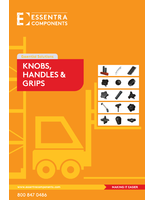Ultra Small, Custom Inductor for Acoustic Tags to Track Migration Patterns of Fish
In recent years, acoustic tags have become the standard in fish telemetry for the study of the behavior of fish in research for example focusing on fish migration, fish predator and prey dynamics, fish dam – bypass survival rates, among others that can use acoustic tag applications. A leading supplier of acoustic telemetry equipment contracted CET Technology to develop and manufacture an ultra small inductor for use in a 7mm diameter acoustic transmitter for the study of salmon smolts and juvenile species, focusing on improving the survival rates for the animals as they move through at hydroelectric dams.
According to Michelle Farnum, Business Manager at CET Technology, "Our client came to us with an interesting and challenging project from the perspective of designing custom magnetics. They needed to greatly reduce the size of the components to fit into a small implantable sensor." The acoustic transmitter consists of a piezo-electric transducer, drive and timing electronics, and a high performance battery to power the device which is encapsulated in a waterproof 7mm diameter cylindrical package.Â
"The customer was using a pot core shaped inductor that had a number of limitations. The size exceeded the packaging requirements and the pot core was far too heavy for this application. They had been using a gapped pot core to get the 2mH inductance they needed. The inductor is part of an RLC resonant frequency circuit operating at 69kHzand the 2mH inductance is fairly important. The issue with using a gapped core was that any applied pressure to the inductor created small changes in the gap distance. This, in turn, altered the inductance leading to issues with their resonant circuit," she added.
The engineers of CET Technology designed a toroidal solution, which has no gap in the core. The main obstacles were determining a) the toroidal shape and b) the needed turns to avoid saturation. Using the needed number of turns with a typical ferrite core (like the pot core that they had been using) would be problematic because a core generally has a high AL value. This means the inductance would greatly surpass the desired 2mH. By using a low AL valued toroidal shape core and the correct turns to avoid saturation, CET was able to achieve the 2mH inductance with less than a 10% variation.
Farnum explains why the client selected CET Technology – "We were able to help them out with another inductor, an axial shape inductor, that they were winding by hand themselves. The last time they purchased the axial inductors, their vendor was unable to provide consistent quality. Our samples were much better and they are now in the process of determining different inductances of the same shape/size so that we can manufacture those as well. Plus, with our advanced manufacturing technology, we are saving them a lot of money."
CET Technology was instrumental in developing the robust components needed in ultra small acoustic sensors to understand the effectiveness of bypass and guidance pathways at hydroelectric dams necessary to protect fish populations. The results of fish telemetry using acoustic tracking systems have been significant in the efforts to protect migrating salmon populations.
Do you have a magnetics problem to solve? Contact CET today to discuss your requirements.
About CET Technology
CET Technology specializes in the design and manufacture of standard and custom magnetics. CET manufactures a full line of ROHS compliant components including transformers, power supplies, inductors, coils, chokes and DC/DC converters. They use the latest manufacturing techniques to guarantee lower production costs with excellent repeatability and performance.
Michelle Farnum
CET Technology
27 Roulston Rd
Windham NH 03087
Phone: 603-894-6100
E-mail:Â cet@cettechnology.com
www.cettechnology.com




